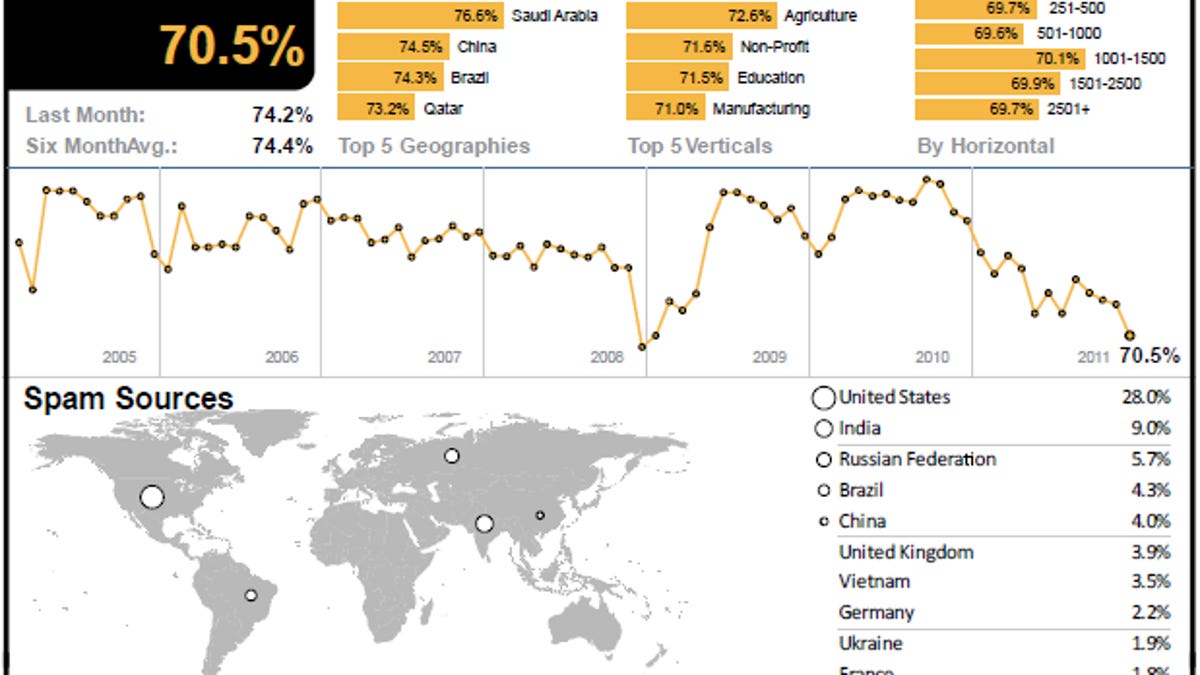Spam sinks to lowest level in almost three years, says Symantec
The amount of spam around the globe now accounts for 70 percent of all e-mail, a sharp decline from 2009 when it accounted for 90 percent.

Think you're seeing less junk mail in your inbox these days? If so, it's not just your imagination.
The rate of spam across the world has hit close to a three-year low and now encompasses just 70 percent of all e-mails, according to Symantec's November Intelligence Report (PDF).
That number is a healthy drop from 2009 when spam accounted for 90 percent of all global e-mails. And it's close to the 68 percent level seen in late 2008 after the spam hosting ISP McColo was shut down.
In particular, pharmaceutical spam is at its lowest level since Symantec started tracking it, now accounting for 32.5 percent of all spam, cut in half from 64.2 percent a year ago.
Russia proved to be the most spammed region last month, with a rate of 76.7 percent, followed by Saudi Arabia with 76.6 percent of its e-mails blocked as spam. The U.S. fared a little better where 69.9 percent of all e-mails were identified as junk.
Of course, spammers always find a way to bounce back, so the sharp decline in junk mail has been slowing as of late, says Symantec. Plus, the bad guys are using more targeted malware approaches instead of blanketing the world with mass e-mails.
Directed toward specific people or organizations, such targeted attacks often use social media to trick their victims into installing malware geared toward stealing company secrets.
"The aim of these targeted attacks is to establish persistent access to the targeted organization's network, in many cases with the aim of providing remote access to confidential data," Paul Wood, a senior intelligence analyst with Symantec.cloud, said in a statement. "They have the potential to cause serious damage to an organization and in the long term represent a significant threat against the economic prosperity of many countries."
Beyond just searching for confidential information, such attacks can also be used to disrupt business or even damage vital equipment. One prime example is the Stuxnet worm, which was designed to compromise critical infrastructure systems.
Though still rare compared with other types of malware, these types of attacks have jumped four-fold since January. On average, 94 such targeted attacks were blocked by Symantec around the world each day in November. In the U.S., at least one such attack was blocked every day, while in Japan, one attack was blocked only every nine days.
For 2011 as a whole, the public sector was at the top of the list in receiving the greatest number of targeted attacks--around 20 each day. The chemical and pharmaceutical industry was next with 18.6 such attacks per day, followed by the manufacturing sector with 13.6 attacks seen and blocked every day.

